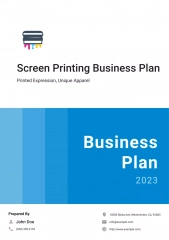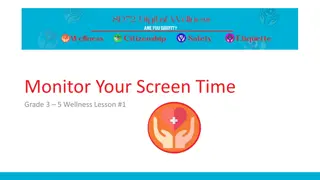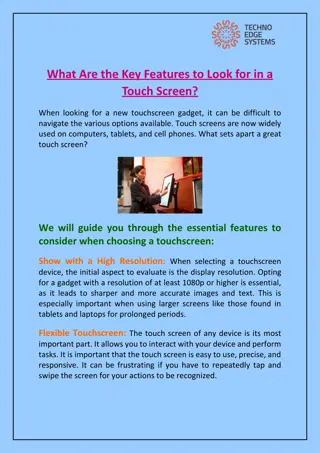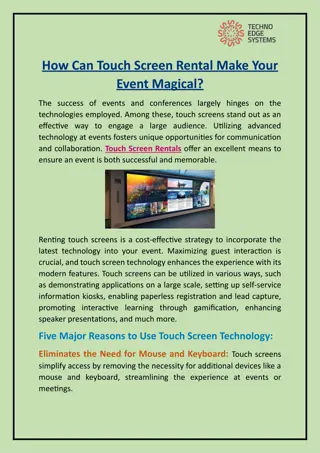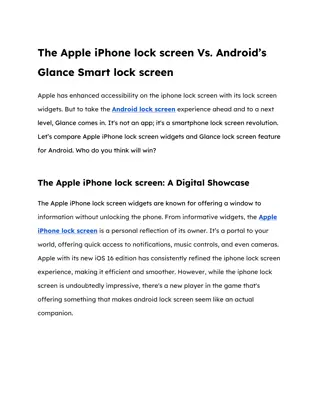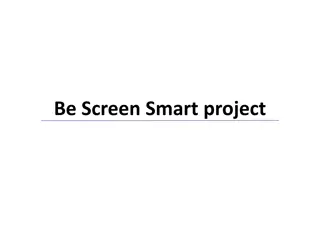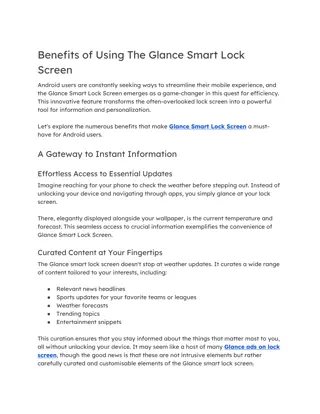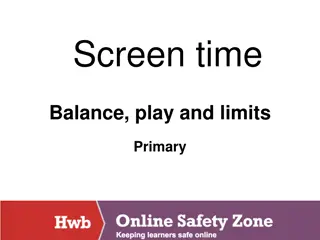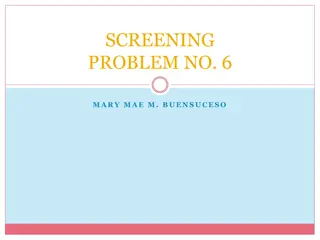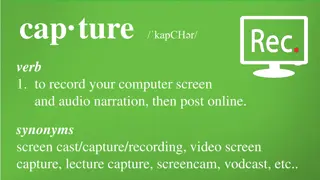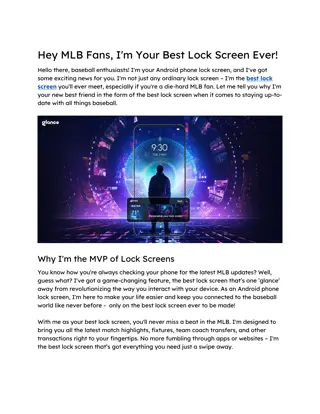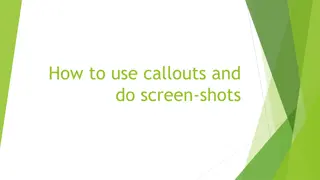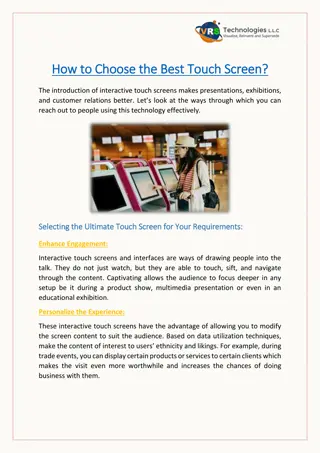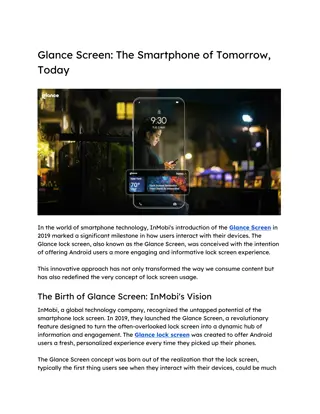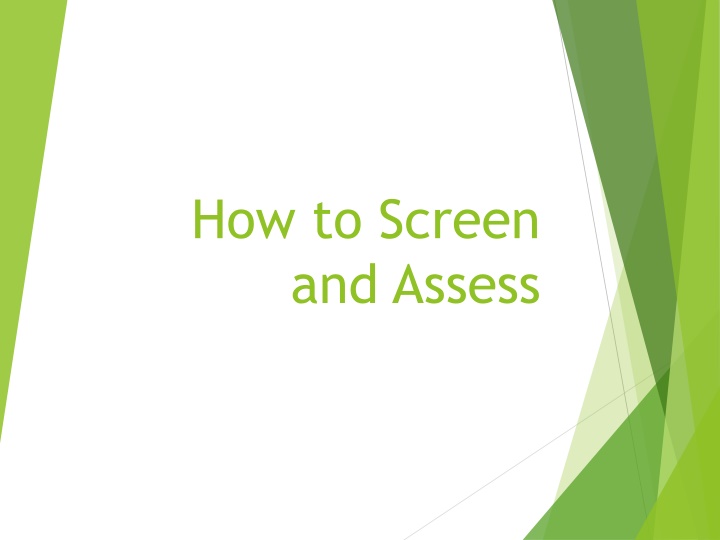
Effective Strategies for Alcohol Screening and Assessment
Explore key strategies for conducting alcohol screening and assessment, including role-playing scenarios, debriefing, and client-centered approaches. Learn about the importance of valid screening tools and the methods of administering them. Enhance your skills in identifying clients' risk levels and determining appropriate interventions.
Download Presentation

Please find below an Image/Link to download the presentation.
The content on the website is provided AS IS for your information and personal use only. It may not be sold, licensed, or shared on other websites without obtaining consent from the author. If you encounter any issues during the download, it is possible that the publisher has removed the file from their server.
You are allowed to download the files provided on this website for personal or commercial use, subject to the condition that they are used lawfully. All files are the property of their respective owners.
The content on the website is provided AS IS for your information and personal use only. It may not be sold, licensed, or shared on other websites without obtaining consent from the author.
E N D
Presentation Transcript
How to Screen and Assess
Role Play: Winging It Break up into groups of 2 Client, provider Use the 3 client roles provided Provider: use your best judgment & clinical skills to screen the client for risky alcohol use &, if necessary, assess for severity & presence of an alcohol use disorder 2 minutes; rotate roles
What went well? What was a challenge? What tools would be helpful in this process? Debriefing
In minutes, a valid and reliable screening tool can
Immediatelyrule-out low/no risk users Immediatelyidentify level of risk Provide context for a discussion about substance use Provide informationon the level of involvement in substance use Offer insight into areas where substance use may be problematic Identifyclients who are most likely to benefit from brief intervention Identifyclients who are most likely in need of referral for further assessment
2 Ways of Administering Screens 1. Provider verbally administers screening instrument(s) 2. client completes screening instrument(s) on paper or electronically (e.g., tablet, laptop)
Client-Centered Screening Agenda Setting Normalize "We ask everyone these questions to help us provide the best health services that we can." Ask permission "Would it be OK if I asked you some other health-related questions about alcohol use?" Address confidentiality "As with all of your health information, your responses to these questions are confidential."
Before Starting I would like to ask you some personal questions that I ask all my clients. These questions will help me to provide you with the best care possible. As with all medical information your responses are confidential. If you feel uncomfortable just let me know.
Special Note about Verbal Screens Use the exact wording provided on the screening instrument - DO NOT PARAPHRASE It is OK to clarify the meaning of an item or question.
NIAAA Single Question Alcohol Screen Pre-screen: Do you sometimes drink beer, wine, or other alcoholic beverages? YES NO NIAAA Single Screener: How many times in the past year have you had five (men) or four (women or clients over age 65) drinks or more in a day? Sensitivity/Specificity: 82%/79% If one or more affirmative answers, move on to assessment (Smith, Schmidt, Allensworth-Davies, & Saitz, 2009)
Positive Screen = Risky Drinker Daily limits 5 for men or 4 for women/anyone 65+ Weekly limits Men: 14/week Women/anyone 65+: 7/week YES NO client is at risk. Assess to determine drinking severity and presence of AUD. client is at low risk.
Screening Based on previous experiences with SBIRT, screening will yield 75% negative responses. Negative
Negative Screen Affirm Advise Open Door Rescreen Annually
Screening If you get a positive screen, you should ask further assessment questions. Positive
Positive Screen Assess further
Assess for Severity Quantity, frequency (explain standard drink) Could you tell me a little more about your drinking patterns? Reflect Follow-up with closed-ended questions if needed
Assess for SUDs
DSM-5 Criteria for Substance Use Disorders Recommendations and Rationale a One or more abuse criteria within a 12-month period and no dependence diagnosis; applicable to all substances except nicotine, for which DSM-IV abuse criteria were not given. b Three or more dependence criteria within a 12-month period. c Two or more substance use disorder criteria within a 12-month period. d Withdrawal not included for cannabis, inhalant, and hallucinogen disorders in DSM-IV. Cannabis withdrawal added in DSM-5. Source: Am J Psychiatry. 2013;170(8):834-851
2 Item Scale Recurrent drinking in hazardous situations In the last 12 months, have you been intoxicated on alcohol (or drugs) where you could have hurt yourself or others? Drinking more than intended In the last 12 months, how often did you drink (or use) more than you intended?
2-Item test characteristics for current AUD in positive screens Sample N Sensitivity Specificity Acute injury in ED, 1998-2000 Random digit dialing 959 494 95% 94% 77% 62% Five family medicine practices in Georgia, 2004-05 280 95% 66% National Epidemiologic Survey on Alcohol and Related Conditions, 2001-02 7,890 77% 86% 18-20 year olds in ED 181 88% 90% (Kelly et al., 2009; Vinson et al., 2007)
Decision Rule No Use / Non-risky use >>> Affirmation Risky Use / Mild SUD >>> Brief Intervention Moderate or Severe SUD >>> Medical Management and/or Referral to Treatment
Role Play: Single Question Screen Break up into groups of 3 client, provider, observer Use the 3 client roles provided Provider: use the single question screen to determine whether the client is a risky drinker If client is risky, assess severity, and use the 2 question SUD scale 3 minutes; rotate roles
What went well? What was a challenge? How was it helpful to have a tool? Debriefing
Single Question Screen for Drugs How many times in the past year have you used an illegal drug or used a prescription medication for nonmedical reasons? (for instance because of the feeling it caused or experiences you had) If response is, None, screening is complete If response contains suspicious clues, inquire further Sensitivity/Specificity: 100%/74% (Smith et al., 2010)
A Positive Drug Screen ANY positive on the drug pre-screen question puts the client in an at-risk category. The followup questions are to assess impact and whether substance use is serious enough to warrant a substance use disorder diagnosis. Ask which drugs the client has been using, such as cocaine, meth, heroin, ecstasy, marijuana, opioids, etc. Determine frequency and quantity Ask about negative impacts
Prescription Drug Misuse Although many people take medications that are not prescribed to them, of primary concern are Opioids (oxycodone, hydrocodone, fentanyl, methadone) Benzodiazepines (clonazepam, alprazolam, diazepam) Stimulants (amphetamine, dextroamphetamine, methylphenidate Sleep aids (zolpidem, zaleplon, eszopicione) Other assorted (clonidine, carisoprodol)

